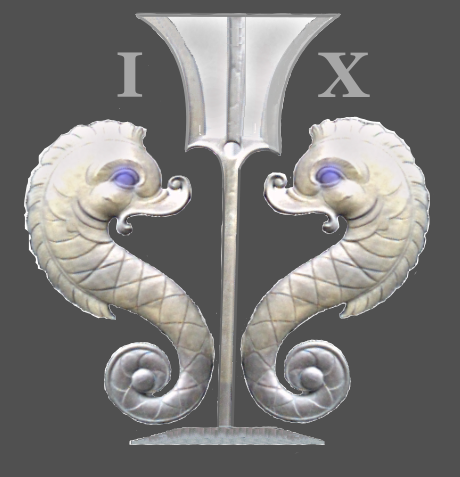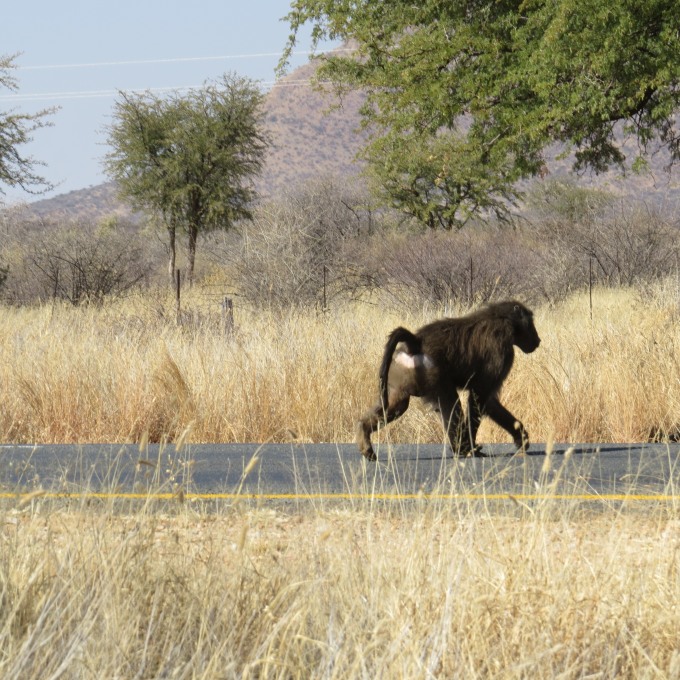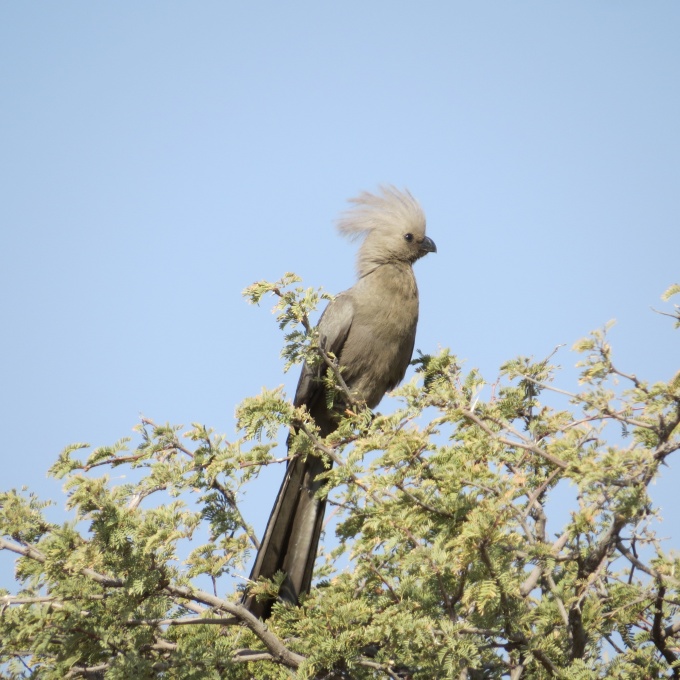Sesriem and Sossusvlei
/Big Dunes and Desert Beauty
Just over eighty dusty, dry kilometers (50 miles) down the bumpy road from Solitaire, we came to Sesriem and the entrance to the Naukluft Namib National Park, Namibia's largest nature reserve. Only a small area of the national park is actually accessible to the public due to its rugged, arid terrain. Sesriem is just a tiny little settlement and gets its name from early pioneers, who wanted to get water from the canyon. They had to tie six leather thongs to the handle of their buckets, in order to draw water from pools that were inaccessible to their livestock. These thongs were called 'leer riems' in Afrikaans, and 'ses' meaning six. The area became known as 'Ses Rieme' or Sesriem.
There's another “oasis” here in Sesriem including a gas station, convenience store and camping sites. Inside the gates to the park, there are more camping sites and thatch huts plus a restaurant and souvenir shop. We stopped to purchase our park permit and take a look around. We were amused by the sociable weavers in a large camelthorn tree next to a thatched roof hut. They were busily helping themselves to bits of the thatch roof to augment their already-huge nest complex.
The 60 km (36 mi) paved road from Sesriem to Sossusvlei was easy-going, as long as David could avoid the potholes. The broad expanse of desert was a myriad of colors ranging from golds and tans to bright rusty reds and it seemed to unfold infinitely before us. The road meandered between the grey-blue Naukluft mountains to the east and towering red sand dunes stretching to the west. Dead acacia trees provided the perfect vantage point for raptors searching for prey.
Oryx and springboks grazed on the sparse vegetation. Pied crows flew overhead, seeking shade in the camelthorn trees.
We spotted a secretary bird, a most unusual-looking critter, purposefully strutting across the parched landscape with several ostrich making their way distractedly in the opposite direction.
Most of the dunes are quite a way off the road, but two in particular were close and had parking lots, beckoning people to climb them. Dune 45, at the 45 km marker, was pretty busy with tourists. We'd climbed this dune on our last visit and had no urge to mingle with the busloads of tourists who were attacking it now. We were content to watch their efforts from below.
The last 5km (3 mi) of the road is unpaved and not accessible to 2-wheel drive vehicles. Buses and sedans stopped here and there was a crowd of people waiting for a tractor-pulled cart to take them the rest of the way. We, of course, were driving Ian's Jeep and followed the rest of the 4x4s along the rutted, deep sandy road to Sossusvlei. The going was slow as we swerved and clawed our way forward. I enjoyed the ride, but would not have enjoyed the driving and maneuvering. David, on the other hand, was smiling through it all, thoroughly delighted with the experience.
At Sossusvlei, a crowd of people were shading themselves under a large camelthorn tree, which seemed to be alive with hundreds of tiny Cape sparrows that chirped loudly and flitted from branch to branch hoping for a handout of tourists' crumbs.
Sossusvlei (soss-us-flay) means 'the gathering place of water' in the local Nama language. Infrequent, seasonal rains from the Naukluft and Tsaris Mountains that succeed in reaching the vlei, create temporary lakes since the underlying clay soil does not absorb the water very quickly. There has been no water lately and thus, our view of the pan was that of parched, weather-beaten earth.
Sossusvlei is one of four pans in the area and we could have walked the 11 km round-trip to Deadvlei, but thought we, too, would have ended up “dead”, and gave it a pass.
We headed back down the deep sand road, dunes all around us, then rejoined the paved road back to Sesriem. We had a very late lunch at the park restaurant. It was mid-afternoon by the time we returned to the main gravel road heading south. We'd hoped to stay the night within the park, but nothing in our price range was available. Accommodation in the area is particularly expensive. Instead, we opted to drive another 60 km (36mi) to Hammerstein Lodge … and we're glad we did. Find out why tomorrow as our Namibia adventure continues.

















 by Julienne Du Toit, Moose is quoted as saying that he settled in the remote outpost of Solitaire because he “liked the barking geckos and the stars … It’s like nature switches on a Christmas tree here every night”. Sorry, we never had the chance to meet Moose.
by Julienne Du Toit, Moose is quoted as saying that he settled in the remote outpost of Solitaire because he “liked the barking geckos and the stars … It’s like nature switches on a Christmas tree here every night”. Sorry, we never had the chance to meet Moose.

 . We stopped to take a photo on the way back and drove around the shop grounds, which were pretty bizarre, but the shop was unfortunately closed.
. We stopped to take a photo on the way back and drove around the shop grounds, which were pretty bizarre, but the shop was unfortunately closed.








